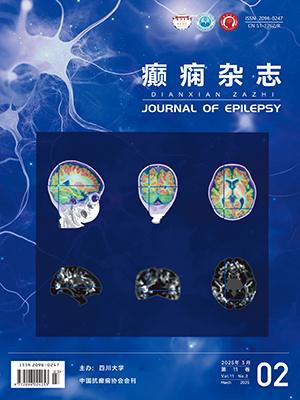| 1. |
Tadmouri A, Kiyonaka S, Barbado M, et al. Cacnb4 directly couples electrical activity to gene expression, a process defective in juvenile epilepsy. EMBO, 2012, 31(18):3730-3744.
|
| 2. |
Cossette P, Liu L, Brisebois K, et al. Mutation of GABRA1 in an autosomal dominant form of juvenile myoclonic epilepsy. Nat Genet, 2002, 31(2):184-189.
|
| 3. |
Gallagher M J, Song L, Arain F, et al. The juvenile myoclonic epilepsy GABA(A)receptor alpha1 subunit mutation A322D produces asymmetrical, subunit position-dependent reduction of heterozygous receptor currents and alpha1 subunit protein expression. J Neurosci, 2004, 24(24):5570-5578.
|
| 4. |
Krampfl K, Maljevic S, Cossette P, et al. Molecular analysis of the A322D mutation in the GABA receptor alpha-subunit causing juvenile myoclonic epilepsy. Eur J Neurosci, 2005, 22(1):10-20.
|
| 5. |
Ding L, Feng HJ, Macdonald RL, et al. GABA(A) receptor alpha1 subunit mutationA322Dassociated with autosomal dominant juvenile myoclonic epilepsy reduces the expression and alters the composition of wild type GABA(A) receptors. J Biol Chem, 2010, 285(34):26390-26405.
|
| 6. |
Dibbens LM, Feng HJ, Richards MC, et al.GABRD encoding a protein for extra-or peri-synaptic GABAA receptors is a susceptibility locus for generalized epilepsies. Hum Mol Genet, 2004, 13(13):1315-1319.
|
| 7. |
Brickley SG, Revilla V, Cull-Candy SG, et al. Adaptive regulation of neuronal excitability by a voltage-independent potassium conductance. Nature, 2001, 409(6816):88-92.
|
| 8. |
Macdonald RL, Gallagher MJ, Feng HJ, et al. GABA(A) receptor epilepsy mutations. Biochem Pharmacol, 2004, 68(8):1497-1506.
|
| 9. |
Lenzen KP, Heils A, Lorenz S, et al. Association analysis of the Arg220His variation of the human gene encoding the GABA delta subunit with idiopathic generalized epilepsy. Epilepsy Res, 2005, 65(1-2):53-57.
|
| 10. |
Medina MT, Suzuki T, Alonso ME, et al. Novel mutations in Myoclonin1/EFHC1 in sporadic and familial juvenile myoclonic epilepsy. Neurology, 2008, 70(22 Pt 2):2137-2144.
|
| 11. |
Jara-Prado A, Martinez-Juarez IE, Ochoa A, et al. Novel Myoclonin1/EFHC1 mutations in Mexican patients with juvenile myoclonic epilepsy. Seizure, 2012, 21(7):550-554.
|
| 12. |
Suzuki T, Delgado-Escueta AV, Aguan K, et al. Mutations in EFHC1 cause juvenile myoclonic epilepsy. Nat Genet, 2004, 36(8):842-849.
|
| 13. |
Craiu D. What is special about the adolescent (JME) brain?. Epilepsy Behav, 2013, 28(Suppl 1):45-51.
|
| 14. |
Katano M, Numata T, Aguan K, et al. The juvenile myoclonic epilepsy-related protein EFHC1 interacts with the redox-sensitive TRPM2 channel linked to cell death. Cell Calcium, 2012, 51(2):179-185.
|
| 15. |
Ikeda T, Ikeda K, Enomoto M, et al. The mouse ortholog of EFHC1 implicated in juvenile myoclonic epilepsy is an axonemal protein widely conserved among organisms with motile cilia and flagella. FEBS Lett, 2005, 579(3):819-822.
|
| 16. |
Leon C, de Nijs L, Chanas G, et al. Distribution of EFHC1 or Myoclonin 1 in mouse neural structures. Epilepsy Res, 2010, 88(2-3):196-207.
|
| 17. |
Grisar T, Lakaye B, de Nijs L, et al. Myoclonin1/EFHC1 in cell division, neuroblast migration, synapse/dendrite formation in juvenile myoclonic epilepsy. Jasper's Basic Mechanisms of the Epilepsies[Internet]. 4th edition. Bethesda (MD):National Center for Biotechnology Information (US), 2012.
|
| 18. |
de Nijs L, Leon C, Nguyen L, et al. EFHC1 interacts with microtubules to regulate cell division and cortical development. Nat Neurosci, 2009, 12(10):1266-1274.
|
| 19. |
Suzuki T, Miyamoto H, Nakahari T, et al. Efhc1 deficiency causes spontaneous myoclonus and increased seizure susceptibility. Hum Mol Genet, 2009, 18(6):1099-1109.
|
| 20. |
Kapoor A, Satishchandra P, Ratnapriya R, et al. An idiopathic epilepsy syndrome linked to 3q13.3-q21 and missense mutations in the extracellular calcium sensing receptor gene. Ann Neurol, 2008, 64(2):158-167.
|
| 21. |
Sapio MR, Vessaz M, Thomas P, et al. Novel carboxypeptidase A6 (CPA6) mutations identified in patients with Juvenile Myoclonic and Generalized Epilepsy. PLoS One, 2015, 10(4):e123180.
|
| 22. |
Pal DK, Evgrafov OV, Tabares P, et al. BRD2 (RING3) is a probable major susceptibility gene for common juvenile myoclonic epilepsy. Am J Hum Genet, 2003, 73(2):261-270.
|
| 23. |
Chachua T, Goletiani C, Maglakelidze G, et al. Sex-specific behavioral traits in the Brd2 mouse model of juvenile myoclonic epilepsy. Genes Brain Behav, 2014, 13(7):702-712.
|
| 24. |
Mas C, Taske N, Deutsch S, et al. Association of the connexin36 gene with juvenile myoclonic epilepsy. J Med Genet, 2004, 41(7):e93.
|
| 25. |
Greenberg DA, Cayanis E, Strug L, et al. Malic enzyme 2 may underlie susceptibility to adolescent-onset idiopathic generalized epilepsy. Am J Hum Genet, 2005, 76(1):139-146.
|
| 26. |
Parihar R, Mishra R, Singh SK, et al. Association of the GRM4 gene variants with juvenile myoclonic epilepsy in an Indian population. J Genet, 2014, 93(1):193-197.
|
| 27. |
Esmail EH, Labib DM, Rabie WA. Association of serotonin transporter gene (5HTT) polymorphism and juvenile myoclonic epilepsy:a case-control study. Acta Neurol Belg, 2015, 115(3):247-251.
|
| 28. |
von Podewils F, Kowoll V, Schroeder W, et al. Predictive value of EFHC1 variants for the long-term seizure outcome in juvenile myoclonic epilepsy. Epilepsy Behav, 2015, 44:61-66.
|
| 29. |
Martinez-Juarez IE, Alonso ME, Medina MT, et al. Juvenile myoclonic epilepsy subsyndromes:family studies and long-term follow-up. Brain, 2006, 129(Pt 5):1269-1280.
|
| 30. |
Cvetkovska E, Panov S, Kuzmanovski I. Clinical genetic study in juvenile myoclonic epilepsy. Seizure, 2014, 23(10):903-905.
|
| 31. |
高瑜, 魏晓珊, 王玉平.青少年肌阵挛癫痫的临床和电生理特征及抗癫痫药物疗效分析.癫痫杂志, 2016, 2(1):9-13.
|




